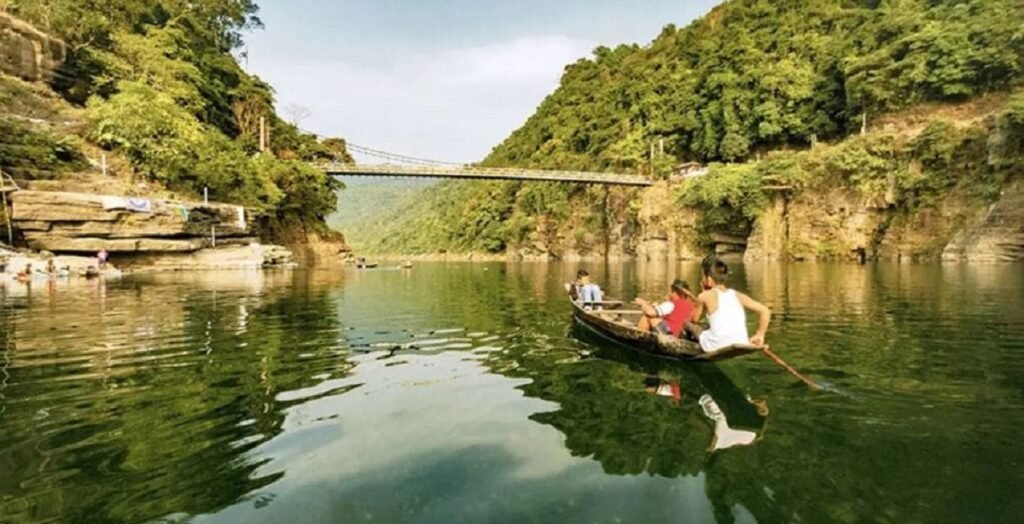
Meghalaya MP Ricky J Syngkon has written to the Centre seeking immediate intervention over what he described as “severe environmental degradation” of the Umngot River in West Jaintia Hills, allegedly caused by construction activities under the Shillong-Tamabil road expansion project. The river popular for its pristine clear water at Dawki along the Indo-Bangladesh border has now turned brown, the MP highlighted. In his letter to Union Transport Minister Nitin Gadkari and Environment Minister Bhupender Yadav, the MP said the Umngot, once celebrated as ‘Asia’s cleanest river’, has turned muddy and lifeless due to large-scale dumping of soil and debris from ongoing hill-cutting work along the 71-km NH-40 expansion project.
“The Umngot River, a symbol of Meghalaya’s pristine natural heritage and a major tourism asset, has tragically turned brown this October — when its waters should be crystal clear,” Syngkon wrote, warning that the degradation has alarmed local communities, environmentalists, and tourism operators. The Shillong–Tamabil road expansion project is being funded by the Japan International Cooperation Agency (JICA). The MP questioned whether JICA’s stringent environmental and social safeguards had been adhered to, demanding that proper Environmental Impact Assessment (EIA) and monitoring reports be verified.
Syngkon also criticised the Meghalaya State Pollution Control Board for its inaction despite visible violations, citing a precedent where the National Green Tribunal (NGT) imposed a ₹2 crore penalty for similar offences along Uttarakhand’s Bhagirathi River. Highlighting the socio-economic fallout, Syngkon said the Umngot River sustains hundreds of families through tourism-related livelihoods such as boating, homestays, and handicrafts. “Its global reputation for ‘floating boats’ has been badly affected, with many tourists cancelling their trips this season,” he said. The MP has called for an immediate halt to all hill-cutting and soil disposal activities affecting the river, a joint central inspection, and environmental compensation against NHIDCL. He also sought quarterly independent monitoring of project impacts and the preparation of a river restoration and rehabilitation plan.
